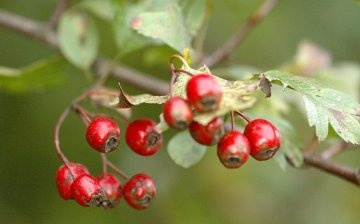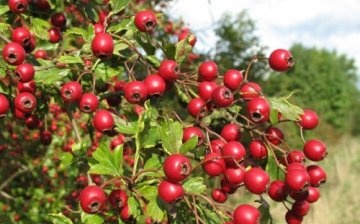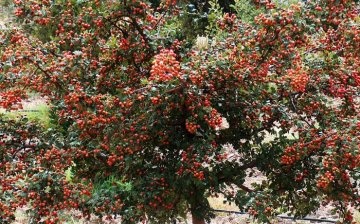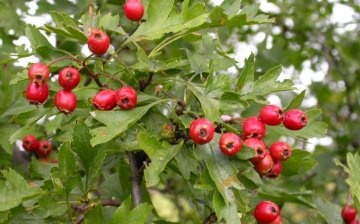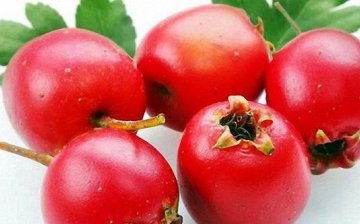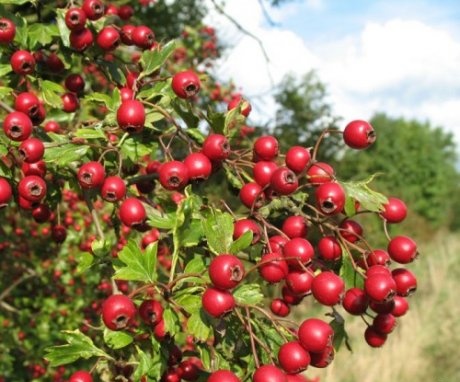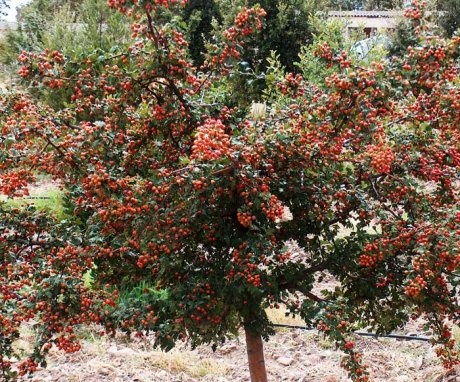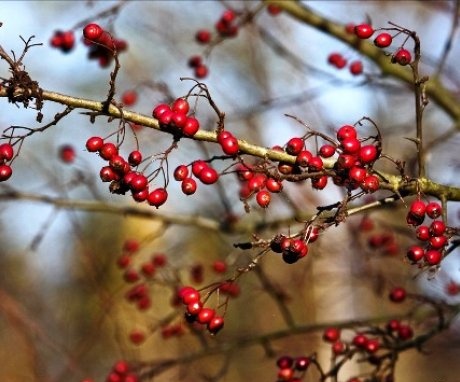Common hawthorn - a beautiful and useful shrub in the garden
ABOUT hawthorn, a famous shrub with sharp needles, is known to everyone because it is often found in the wild. But how to cultivate it so that in the garden it attracts insects with its fragrant flowers, birds - with its berries, and a person can strengthen his heart and nerves with fruits. It is not difficult to do this, because the tree is unpretentious, resistant to frost and heat.
Content:
- External features of the bush
- Planting a hawthorn
- Care Tips
- Plant diseases and pests
- Practical use of hawthorn fruit
External features of the bush
The genus numbers up to a thousand species hawthorn, and it is found on all continents of the globe, except for Antarctica. The edges of deciduous forests, the banks of reservoirs, and the slopes of ravines are considered a favorite place for the growth of shrubs. Recently, gardeners have paid attention to the hawthorn, and it has firmly taken its place in landscape design.
structural features of hawthorn:
- To say about a hawthorn that it is a bush is not entirely correct, because sometimes its trunk reaches a meter in girth, with a height of up to ten meters.
- The color scheme of the bark of the main trunk and branches of the plant is presented in brown tones with a reddish and grayish tint. On the branches there are short spines up to one centimeter long with a smooth surface.
- In spring, shiny dark green leaves with serrated or deeply dissected plates develop from oval-conical buds. On the reverse side there is a waxy coating of light green color.
- The flowers of the fruit tree are outwardly similar to apple trees both in shape and color, collected in corymbose inflorescences.
- The presence of one pistil in the perianth among the many stamens gave the name to this type of fruit plant.
- After graduation flowering in May, small fruits of a reddish and dark orange hue with sweet flesh are tied. The berries ripen during August-September.
Hawthorn is a favorite tree for birds, which carry the seeds of the plant. Thanks to the birds, it reproduces. Fruiting of a shrub can only be expected in the tenth year of the tree's life. But the life of a shrub is up to two hundred years, although there are also elders of three hundred years of age.
Planting a hawthorn
The best place for a shrub in the garden is sunny, since even in partial shade it will not bloom and bear fruit abundantly. It is usually ideal for creating hedge, because it is ecologically plastic: the fertility of the soil is not important to the shrub, it is resistant to any environmental conditions, even to urban gas pollution.
But the hawthorn prefers loamy or heavy clay soils, so its plantings serve to strengthen the banks and embankments.
Boyarka seedlings are planted in the off-season or in summer at a distance of up to two meters from each other, so that they have enough nutrients for growth. Planting pits are prepared up to 70 centimeters deep. Usually they are covered from below with a drainage layer in the form of rubble mixed with sand. Adding nutrient mixes will also not harm the plant.It can be lime and phosphate rock.
When planting hawthorn seedlings, it is necessary to monitor the level of the root collar, which should be on a level with the ground. Having rammed the tree trunk circle, it is covered mulch from peat, and then watered abundantly. Usually hawthorn takes root easily, and after eight years it will be covered with white and pink inflorescences for the first time.
Care Tips
Undemanding to the growth conditions of a shrub does not mean a lack of attention to it:
- With a dry summer, it is recommended to water the bushes twice a month, with a moderate one - one will be enough.
- Carrying out top dressing necessary especially in early spring and before flowering. In the spring it will be complex fertilizers, and in the summer, a bucket of manure diluted with water is poured under each bush.
- Loosening and removal weeds in near-barrel circles will help create conditions for better air access to root system plants. Every autumn, the soil near the trees is dug to the depth of a shovel bayonet.
- Young plantings are not pruned to allow them to grow. Removing diseased and dead branches is suitable for them. And for an adult plant, a haircut is required in order to give the crown different shapes in the form of balls, squares, rhombuses. In early spring, it is necessary to cut branches that lead to a thickening of the crown.
- Although berry bushes are not afraid of frost, it is better to cover young bushes with foliage and branches.
With careful care, the hawthorn will repay you with abundant flowering in the spring, feed you with delicious sweet berries that will strengthen your health.
Plant diseases and pests
Problems encountered by hawthorn, are similar to his fellow in the garden, apple tree... Basically, these are infections with fungal diseases, which include the appearance powdery mildew, rust, rot. The appearance of diseases is favored by weather conditions: high humidity, intense heat. Fungi begin to spread vigorously and destroy the plant.
To prevent the occurrence of such problems, attention must be paid to disinfecting the soil.
Having processed the planting with copper sulfate in advance, it is possible, together with slaked lime, to bring salvation to them from fungal infections. Preventive measures include timely harvesting of rotten berries, especially volunteers, during the entire fruiting of the tree, as well as such a procedure as burning fallen leaves will save the tree from pests.
There are many pests of hawthorn, they also affect other fruit trees:
- Caterpillars hawthorn butterflies eat the buds swollen in spring, and then feed on the buds and leaves of the bush. The parasite can be identified by the gray color of the body with black longitudinal stripes. Caterpillars emerge from eggs laid by a butterfly in June and form colonies during the summer. Preparing for the long winter, they make themselves a nest in the leaves and so live until spring, when the leaves of fruit trees can be harmed again.
- The sawfly is called a fly, since outwardly it is very similar to it. Its larvae hibernate in the upper layers of the soil, hiding in cocoons. In early summer, adult insects fly out and lay their eggs on leaf plates, sawing them in half. Spraying with insecticidal preparations will save the shrub from harmful insects and their larvae.
By examining the hawthorn bushes on time, you can detect pests and diseases in advance, and take appropriate measures.
Practical use of hawthorn fruit
At the end of September - October, hawthorn fruits are harvested, it is especially convenient to do this after the first frost. Processing berries involves using them for making jam, jelly, jelly. In terms of composition, the fruits contain a large amount of vitamins, minerals, essential oils, organic acids, which increases their value.
Berries can be harvested by drying. To do this, they are scattered under a ventilated canopy in a thin layer.The prepared raw materials are stored in canvas bags, drinks and teas are prepared from it. But the beneficial properties can be preserved in fruits only for a year.
Official medicine has not bypassed this valuable plant product: tinctures are prepared from it that normalize blood pressure, treat arrhythmias, and reduce nervous irritability.
They help lower blood sugar levels. For those who have disturbed sleep, hawthorn tincture is a salvation, it will make it deep and long-lasting. Also, a few drops of alcoholic tincture of hawthorn berries before meals will eliminate painful symptoms during menopause in women.
Even in the chemical industry, the bark and branches of the tree have been used: they are recycled and used to create brown and red paint. Unique bush hawthorn not only for its medicinal properties, but also as an ornamental plant in various design compositions.
More information can be found in the video:



